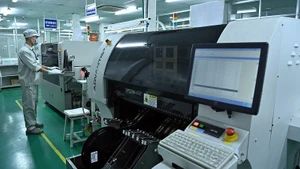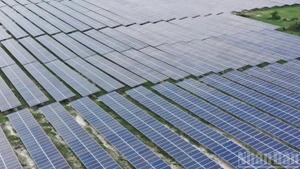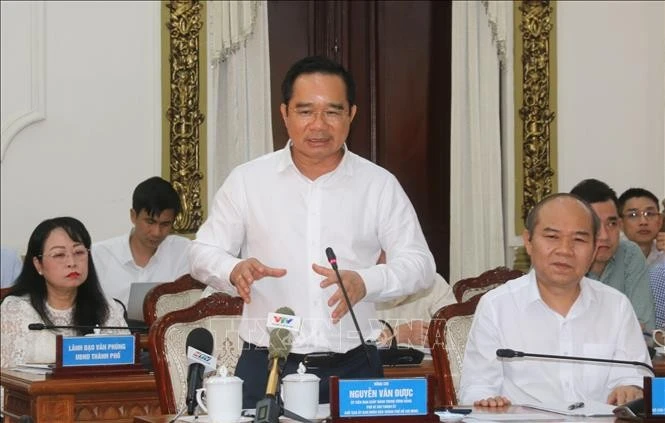Improving aggregate demand to stimulate growth
Q: We have already passed the halfway point of 2023 with many solutions to continue socio-economic recovery and development. What do you think about Vietnam’s economic situation in the second quarter and the first 6 months of this year?
A: In the context of the world economy still having many instabilities, with more difficulties than advantages, GDP growth in the first 6 months continued to be maintained with an increase of 3,72%. Although this growth rate has not lived up to expectations, Vietnam's economy has shown some signs of transformation.
It can be seen that in the first 6 months of 2023, our country’s socio-economic situation has achieved positive results, the macro-economy is stable, major balances are secured, inflation has been controlled at an appropriate level.
The industrial sector has temporarily ended its negative growth momentum and shown more optimistic signalsfor the economic outlook towards the end of this year. The agriculture, forestry and fishery sectors have grown steadily and continue to be the mainstays of the economy.
The service sector continues to be the spotlight with a growth of 6,33%, contributing 3,04 percentage points to the growth rate of the whole economy's gross value added. The flourish of tourism has spread and promoted the development of related economic sectors such as wholesale and retail activities; transportation and warehousing services; entertainment activities, etc.
Moreover, monetary policy implementation and the flexibility in interest rates adjustments have helped stabilize the growthof financial, banking and insurance activities.
However, besides the achieved results, the economy is still facing many difficulties and challenges. Although Industry value added in the first six months of this year increased by 0,44% compared to the same period last year, it was the lowest increase for the same periodover the past 12 years.
With this background of high inflation and the decline in consumer demand in some markets who are important trading partners of Vietnam, the index of industrial production (IIP) decreased compared to the same period last year because of the decrease in orders; export turnover of goods also decreased by 12,1% over the same period.
Foreign direct investment registered to Vietnam continued to decline sharply in the registered adjusted capital-added, showing that foreign investors have not been able to increase their investment in existing projects in Vietnam yet.
High service prices, transportation charges, logistics costs, etc, result in increased production costs and inflationary pressure, and pose potential risks to macroeconomic stability.
Q: Driving forces of the growth are changing with the trend of gradually decreasing the contribution of the industrial sector and increasing the service sector's one. Could you please share your opinion on improving aggregate demand to stimulate growth as the General Director of the General Statistics Office?
A: As an open economy, Vietnam depends considerably on the global market. While world demand is declining, domestic production is facing difficulties in terms of both input and output, the growth problem focusing on stimulating production will be less effective.
Instead, it is necessary to stimulate consumption demand and expand investment in order to support production development.
To promote aggregate demand, the Government is making efforts to accelerate the disbursement of public investment to create impetus for economic development, focusing on the country’s important infrastructure projects. Additionally, the continued measures supporting people under the Socio-Economic Development and Recovery Program also indirectly increased aggregate demand.
Many other demand stimulus measures are also being implemented such as lowering interest rates to support enterprises to increase their capital access ability, contributing to the recovery of production and business activities; exempting, reducing, extending taxes and fees, including the 2% VAT reduction policy.
With the simultaneous implementation of a series of stimulus measures and the flexible combination of fiscal and monetary policies, domestic demand will be significantly improved and contribute to the recovery of economic growth.
High consumer demand will be the impetus for the economy and the domestic market will be the mainstay for enterprises when the external market fluctuates.
Promoting the internal strength
Q: As a highly open economy, Vietnam is increasingly exposed to adverse external influences. In your opinion, how to promote inner strength and help the country overcome difficulties?
A: The results of 4,14% growth in the second quarter and 3,72% growth in the first 6 months of this year show that we have tried our best and these are also the result of the inner resources of Vietnam's economy in the context of the global economy facing many difficulties and fluctuations.
I would like to emphasise that, although GDP growth did not live up to expectations, our country's important economic sectors did make great efforts to do so.
Specifically, the primary sector (agriculture, forestry, fishery) has maintained a relatively high, positive growth rate to ensure food supply and security, and at the same time, it also created favourable conditions for the operation of the export processing industry in recent years.
In the secondary sector (industry and construction), despite facing many difficulties in the contextof high input prices for thermal power generation and a lack of water for hydroelectricity, energy supply has basically been maintained to supplement production and people's life.
The tertiary sector (service sector) is emerging as the largest contributor to economic growth, this result reflects the effectiveness of domestic demand stimulus policies and tourism promotion activities in recent years that have maintained the growth of the service and tourism industries.
Notably, the number of international tourists coming to Vietnam in the first 6 months was 9,3 times higher than it in the same period last year. Visitors coming to Vietnam will consume and use domestic services, which helps increase the ability to consume and export goods and locally directly services - leading to the growth of related service industries.
Q: With the results achieved in the first 6 months, how does the General Statistics Office evaluate the implementation of the 6,5% in GDP growth target this year. What are the growth impetuses in the 2 remaining quarters?
A: Under the difficulties and challenges of the global economy, GDP growth in the first quarter of 2023 was 2,32 percentage points lower; the second quarter was 2,56 percentage points lower compared to the operating scenario.
Therefore, in the last 6 months of this year, the whole country's economy needs to grow by 9% to reach the target of 6.5% growth for the whole year.
The General Statistics Office will continue to update the economic growth scenario for the next quarters based on the forecast of the economic situation for the last 6 months of this year.
The impetus for growth in the last months of the year is that public investment is being aggressively promoted to free up resources and create opportunities promoting production and business activities. Currently, many projects in the Socio-economic development and recovery program as well as in the Medium-term public investment plan have basically completed their procedures and will be fully implemented.
Many industries will directly benefit such as the construction industry, the transportation industry, the construction material manufacturing industry, etc.
The growth of tourism activities will create opportunities for many service industries to develop and promote domestic consumption and local exports.
Agricultural and fishery export activities continue to be stable; many products which are in season, have high export potential, and so on.
I believe that with the Government and Prime Minister's close direction and management and the determination of ministries, sectors and localities, the economy can still achieve the highest possible growth rate despite the difficulties in the global economy.
Thank you very much!
















